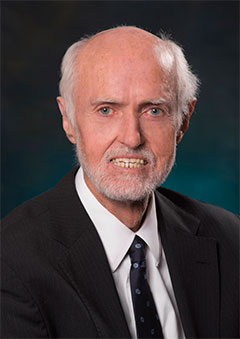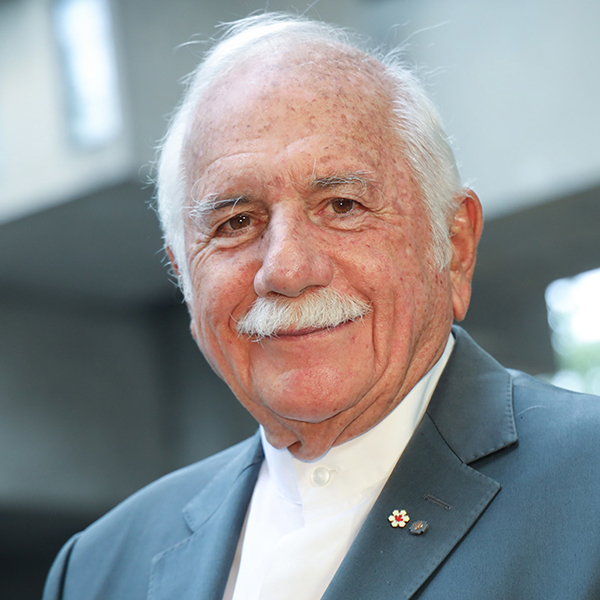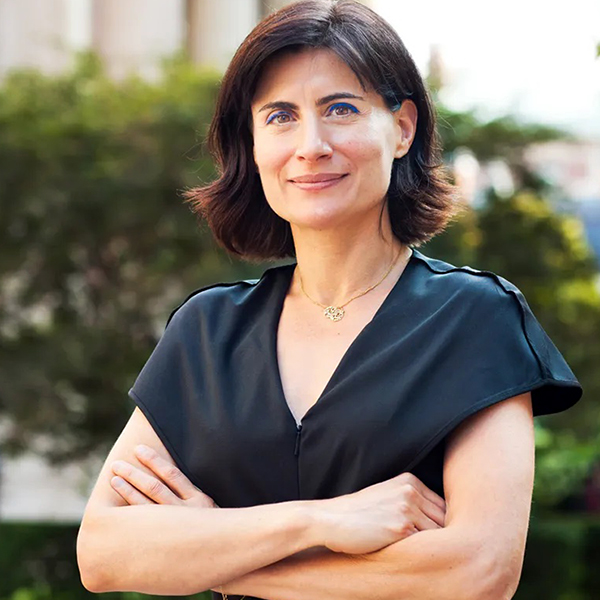What do the Burj Khalifa in Dubai, the Petronas Towers in Malaysia, and the Freedom Tower in New York have in common?
Aside from their incredible heights, the correct answer is, Peter Irwin, PhD’74.
A wind engineer renowned in his field, Irwin has worked on some of the world’s tallest buildings in addition to bridges and sports stadiums. He’s a founding partner of RWDI, based in Guelph, Ont., and has been honoured multiple times for his contributions to the field.
The structural design of a building has to account for wind, he explains, which increases as you go up. “And if the building gets taller and more slender, wind dominates over all other loads, even earthquake loads,” Irwin says.
“It’s the biggest thing that’s driving the cost of the structure.”
A guiding principle in the design of a tall building is keeping the structure’s motions down to an acceptable level, Irwin says. “You can imagine if you’re in a room at the top of a tall building and you can feel it swinging sideways, you’re not going to feel very safe or comfortable.”
While you can’t stop buildings from moving “what you can do is to keep the motions within an acceptable range,” Irwin says. Which is where a stabilizing damping system comes into play to counteract motion, keeping it comfortable for the occupants.
Irwin studied aeronautical engineering at the University of Southampton in England, and later came to McGill to do his PhD in mechanical engineering. He and his wife liked Canada and decided to stay.
Irwin started working on wind in his position at the National Research Council (NRC) in Ottawa before joining what would become RWDI.
Tall structures deflect winds down to ground level, and Irwin developed a wind velocity sensor at the NRC that made it easier to measure wind speeds around the base of buildings, which can affect the usability of the space in the vicinity.

“One of the things you can do in a wind tunnel is to build a model of the building, measure all the wind forces on the building, but also you can measure the wind velocities around its base,” Irwin says. “Ideally, you’d measure it at many locations. And the existing instrumentation was a bit cumbersome for doing that. So I developed a method using this sensor, which is now called the Irwin Sensor.”
Irwin was the lead wind engineer on the Burj Khalifa project. “It was an amazing experience. It’s the world’s tallest building by a long shot. The previous tallest we’ve worked on was Taipei 101 (in Taiwan), which is 508 metres tall. The Burj Khalifa is 828 metres tall, so it’s like a quantum leap.”
Irwin worked closely with the design firm Skidmore, Owings & Merrill, and calls it a team effort of integrating wind engineering, architecture and structural design to get “a kind of optimum solution”.
RWDI’s input resulted in the building’s position on the site being rotated before construction began to reduce wind impact. “We examined the orientation of the building relative to the strong wind directions, and as a result of that, it was rotated through 120 degrees,” Irwin says. “That brought the motions and the wind forces down quite significantly.”
Wind loads depend a lot on the shape of the building. “On Burj Khalifa, for example, the shape continually changes as you go up the height of the building,” he says. “And that helps break up a phenomenon called vortex shedding.”
RWDI did the wind engineering and predicted snow loads for Toronto’s Rogers Centre, then called the SkyDome. The firm has developed many of the methods that are now used for retractable roofs, Irwin says. “There are a number of special wind issues that need to be examined for retractable roof stadiums. And we learned a lot on the Rogers stadium in Toronto.”
They also look at wind flows within a stadium, and how they might impact the flight of a baseball, for example.
Now semi-retired, Irwin received the Order of Canada in February at a ceremony in Quebec City. “A number of awards suddenly started descending on me in the last few years,” he says.
The accolades include the Davenport Medal in 2015 from the International Association for Wind Engineering, which noted: “Dr. Irwin today is considered as one of the founders of modern wind engineering and its integration in practice for the design of buildings, bridges and structures.”
The Council on Tall Buildings and Urban Habitat awarded him the Fazlur R. Khan Lifetime Achievement Award in 2014.
When Irwin first got into wind engineering in the late 1970s, it was a much smaller field.
“If there are other people interested in wind engineering, I’d encourage them to get into the field,” he says. “It’s going to continue to grow, I think.”


